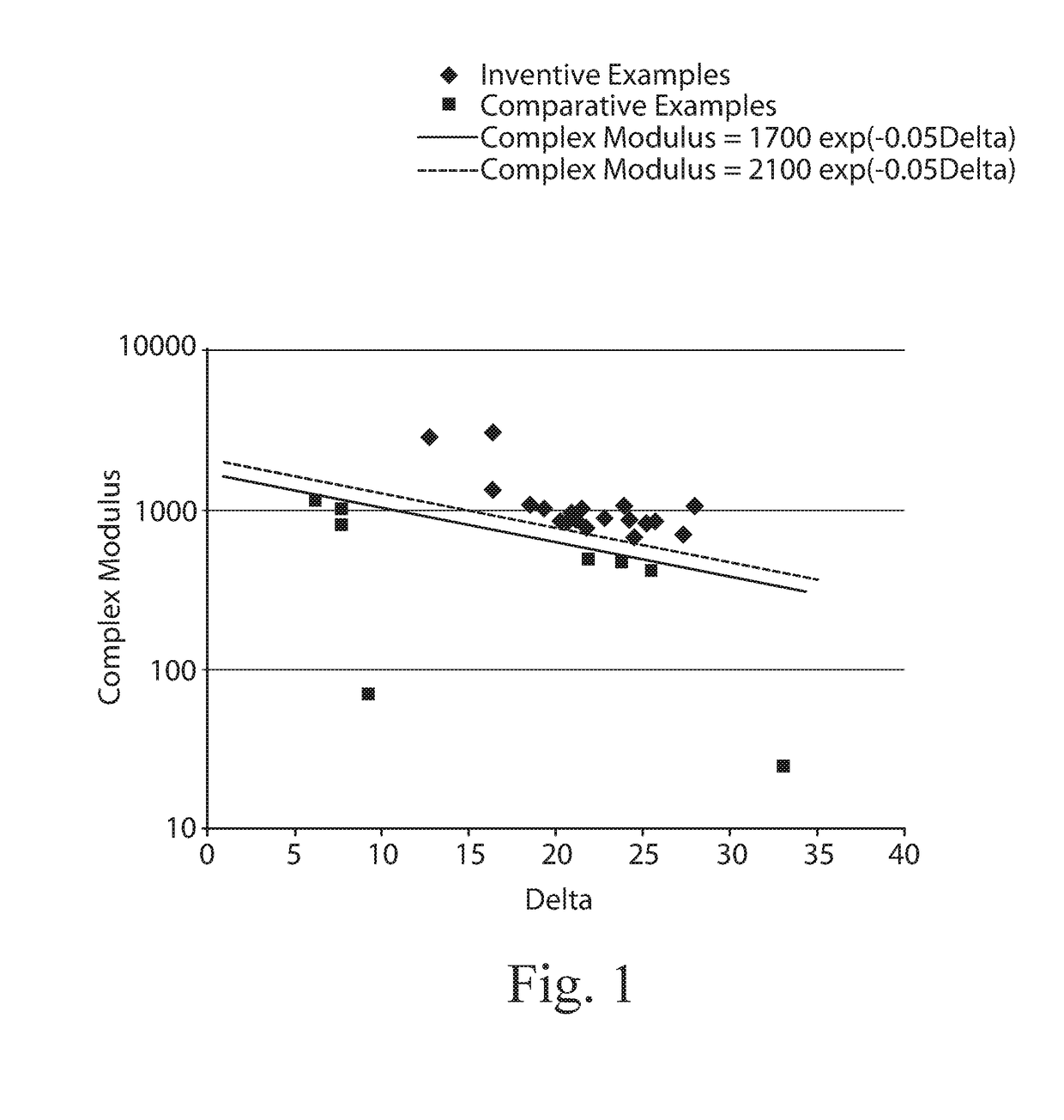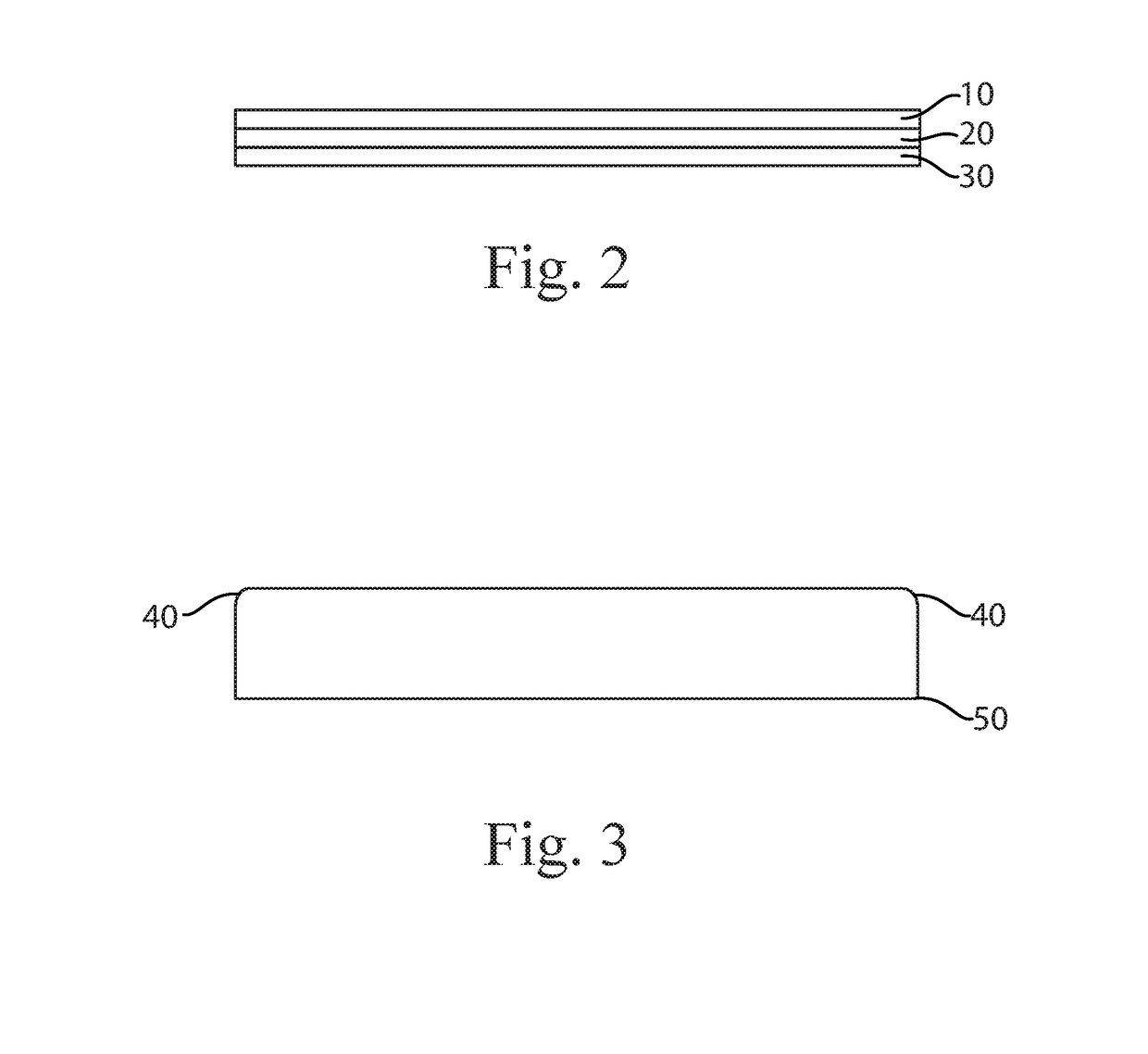Tooth desensitizing oral care compositions, devices, and methods
a technology of oral care and compositions, applied in the direction of dental care, dental compositions, digestive system, etc., can solve the problems of inability to reduce sensitivity through dentifrice alone, inability to stably formulate a dentifrice formulation, and inability to meet the needs of consumers,
- Summary
- Abstract
- Description
- Claims
- Application Information
AI Technical Summary
Benefits of technology
Problems solved by technology
Method used
Image
Examples
example 1
[0134]Compositions according to the present invention were made according to the formulations set forth in Tables 1A through 1D, below.
[0135]Comparative Examples were made according to the formulations set forth in Tables 2A through 2B, below.
[0136]As may be seen in the results shown in Tables 1A through 1B=D, when compared to the results presented in Tables 2A and 2B, and graphically represented in FIG. 1 attached herein, compositions according to the present invention, when applied to a strip of material and a release liner were found to provide sufficient adherence in-vivo, refrain from significant gel flow off the strip during storage, and release the majority of the oral care composition gel from the release liner.
[0137]Examples of desensitizing compositions according to the present invention are found below in Tables 1A, 1B, 1C, and 1D. Comparative examples of desensitizing compositions are found in Tables 2A and 2B. The compositions were compounded using either a Ross double ...
example 2
[0143]Seven individual panelists participated in a qualitative usage study of 5 sensitivity strips. Each panelist was asked to wear 3 of the 5 strips. Panelists were instructed to apply one strip to the outside molars of one quadrant (upper or lower) of their teeth for 10 minutes while at work during business hours (between 9 am and 3 pm). To test the ease of application and fit during use, panelists applied strips to the back molars as this has been identified as the most difficult location to apply and wear the strips. Panelists were instructed to remove the strip and asked to respond to a questionnaire. Panelists recorded evaluations (shown in Table 3) for wearing, positioning, using, “stickiness”, and peeling. Each panelist was asked to repeat the process with a total of nine strips. The only difference between the strips was the length of the strip.
TABLE 3Qualitative Evaluation of Strip Length3.0 cm4.0 cm4.5 cm5.0 cm6.0 cmBase Size1313131213Ease of handling strip with0.7530.495...
example 3
Dentinal Flow Rate Measurement
[0144]Volumetric flow rates through cross-sections of human 3rd molar coronal dentin are measured before and after treatment using a flow cell apparatus (FIG. 6). Twenty two coronal dentin sections of human molars are obtained by cross sectional cutting with a diamond blade saw to a thickness between 0.80 and 1.00 mm. The sections resemble disks due to the circular nature of molars. The center of the disk is dentin 90 with a thin ring of enamel around the circumference (FIG. 6). The cut dentin disks are then placed in 6.0% citric acid for two minutes followed by sonication in water and subsequent rinsing to remove the smear layer created by the cutting process. The removal of the smear layer with citric acid is an effective and well known technique to produce open dentinal tubules representative of sensitive dentin found in-vivo. Samples are then immersed in at least 10 ml of commercial phosphate (pH 7) buffer for storage at neutral pH until needed.
[014...
PUM
 Login to View More
Login to View More Abstract
Description
Claims
Application Information
 Login to View More
Login to View More - R&D
- Intellectual Property
- Life Sciences
- Materials
- Tech Scout
- Unparalleled Data Quality
- Higher Quality Content
- 60% Fewer Hallucinations
Browse by: Latest US Patents, China's latest patents, Technical Efficacy Thesaurus, Application Domain, Technology Topic, Popular Technical Reports.
© 2025 PatSnap. All rights reserved.Legal|Privacy policy|Modern Slavery Act Transparency Statement|Sitemap|About US| Contact US: help@patsnap.com



